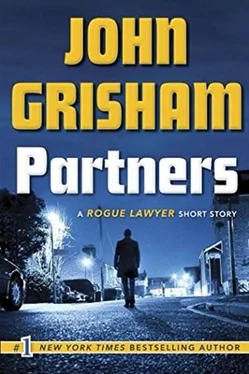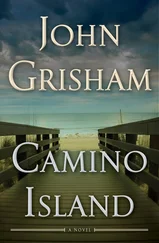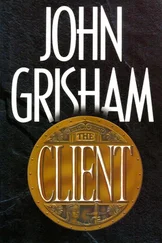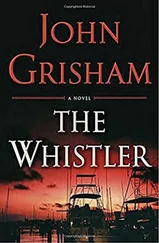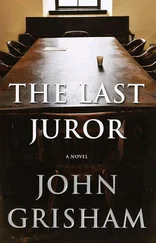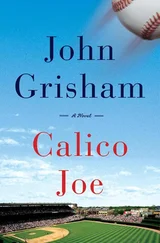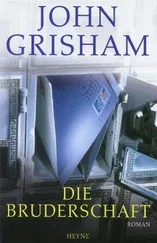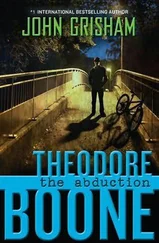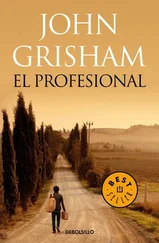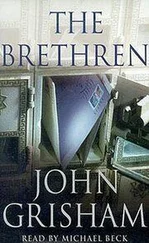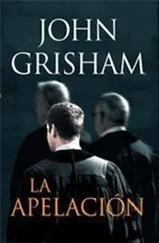Tee Ray whispered to his lawyer, “We got ’em, boss.”
Sebastian said nothing but felt the same way.
As Max Mancini strutted to the podium for his opening statement, Sebastian studied the faces of the jurors. He knew their kids’ names, where they went to church, if at all, which ones had been through a divorce, where they lived and worked, the makes and models of all their vehicles, who had sued or been sued, who had been fired, who had been arrested, and so on. And after memorizing their faces and their backgrounds, and studying them for seven days, he felt like he’d known them forever.
And the trial was just starting.
Tee Ray knew them too. He had copies of everything his lawyers had. He’d kept his sanity for eleven months in solitary confinement by reading case law, code sections, heavy books on trial strategies, anything and everything Sebastian could haul in. And now that he was finally in court, he was determined to miss nothing. During the tedium of jury selection, he had filled dozens of legal pads with his copious note taking. He owned one suit, dark gray, one white shirt, and two striped ties, and with his new horn-rimmed glasses-fake but effective-he could easily pass for another lawyer. Sebastian had lectured him on how to act during all aspects of the trial: no emotions, no reactions, no head shaking at bogus testimony, no eye contact with jurors, no frustration with the judge, no animosity toward Mancini. Sit erect, proper, concerned, respectful, and hear every word. Write down as much as humanly possible.
To his left was Sebastian. To his right, in the “second chair,” was a young lawyer named Will Kendall, a rookie from the public defender’s office who’d volunteered just for the experience. The rules of procedure required two lawyers for the defense in a capital murder trial. Kendall was excited to be included but knew his duties were quite limited.
Sebastian had realized that the smartest guy at the table might well be the defendant himself. Tee Ray had said more than once that he’d fallen in love with the law. If he managed to dodge death row, he might dream of law school.
Let’s take it one step at a time, Sebastian said.
In the biggest trial of his career as the city’s chief prosecutor, Max was well prepared. Not a gifted courtroom orator, he nonetheless kept the jury’s attention. He stayed behind the podium, close to the notes on his legal pad.
Max played his best hand-outrage at the death of such a brave young policeman. He told the jury wonderful things about Buck Lester, then awful things about the dangers of his job. Aren’t we lucky as a city to have officers willing to go undercover and go into the darkest and most dangerous streets?
Predictably, he beat that drum a bit too long and a couple of jurors began looking around. If Knoxel were upstairs in the witness room waiting to testify, Max would have the luxury of narrating a gripping account of the killing. Buck on his knees, grabbing for his gun as the killer approached, with bullets flying, and so on. But Knoxel had vanished, and Max had no other eyewitnesses. Therefore, in his opening statement, he was handcuffed by what he could actually prove. Thomas Ray Cardell fired the shot that killed Buck Lester; he had admitted as much. The defendant will claim it was in self-defense, but please, ladies and gentlemen of the jury, be wary of such testimony. The defendant is on trial for his life.
When Max finally sat down, the jurors and spectators were more than ready for him to do so. Sebastian stood and informed the court that he was opting to deliver his opening statement at the beginning of the defense’s portion of the trial. It was an unusual move but not unheard of. If the prosecution had an airtight case, Sebastian would attack early, in his opening, and warn the jurors about what was coming. But the prosecution’s case was not that strong. He decided to hear it first and ridicule it later.
As Sebastian sat down, he glanced at the crowded courtroom. Jameel and Miss Luella were in the first row directly behind him. Across the aisle, in the front row behind the prosecution, the city’s police chief and half a dozen of his finest were packed shoulder to shoulder, in full uniform, watching the jurors and frowning gravely. It was a part of their playbook when a cop was involved, and it was nothing but intimidation. Judge Schofield knew it too, but there was a dead officer. If his comrades wanted to sit through the trial, they had that right.
The first witness was Melody Lester, Buck’s widow. When he died, they had been married for twenty months and had no children. With Max lobbing up easy questions, she began crying almost immediately as she described what a wonderful person her husband had been. Schofield allowed them to go all the way back to Buck’s high school days, to his glorious athletic career, then the Marines and the wars, his medals and heroics.
Max worked deliberately, trying to build as much sympathy as possible. Sebastian offered nothing on cross-examination. Melody was still in tears when she left the box. Next was Buck’s mother, and another round of crying.
Almost all of this nonsense was irrelevant and inadmissible. Buck’s glorious past had nothing to do with his tragic death. Nevertheless, one or two grieving relatives were always admitted to open a trial and warm up the jury.
During the lunch break, Mancini asked Sebastian to step aside for a word. He whispered, “I don’t like this jury. We’ll offer a deal.”
“I’m listening,” Sebastian said.
“Plea to first degree, we’ll drop the death penalty.”
“Great. So my guy will spend the next forty years in prison.”
“Does he want the death penalty?”
“No, but he’d rather get the needle than forty years.”
“Are you saying no?”
“I can’t do that. I’ll run it by him, but I’m sure he’ll say no.”
Tee Ray said no quickly. They were eating sandwiches at the defense table, along with Will Kendall, and prepping for the afternoon. The courtroom was empty except for two armed deputies lounging in the back row. Their job was to keep an eye on the defendant, but after hauling him back and forth between the jail and the courthouse for days now, they knew they had little to worry about.
The medical examiner, Dr. Glover, took the stand and swore to tell the truth. Sebastian conceded that he was an expert in forensic pathology. Glover had been doing this for years and had a solid reputation. He and Max wasted no time getting to the gore. As Max handed the jurors enlarged color photos of Buck’s head, Glover talked about the autopsy. A single bullet entered through the right eye socket, fatally damaging the brain, lodging there and making no exit. They had a large photo of the bullet and one of Buck on the sidewalk. Buck on the slab. Buck’s cranium cut open. The female jurors turned away. The men couldn’t get enough. It was like watching a car wreck: awful, but compelling.
Glover was a seasoned expert, and Sebastian knew he had little to work with on cross. He asked the doctor if it was possible to determine the angle at which the bullet entered Buck’s right eye socket. The answer was no, because he, Glover, did not know if Buck had been standing, kneeling, falling, sitting, or lying down when he got hit. Nor was there any evidence as to the position of Mr. Cardell when he fired the shot.
Perfect. Sebastian was trying to put to rest the original lie that Buck Lester had been executed as he begged for his life. This had been leaked by the police right after the shooting and became another front-page story. Not even Keith Knoxel, in his fabricated version, had included the bit about Buck on his knees, pleading.
Читать дальше
